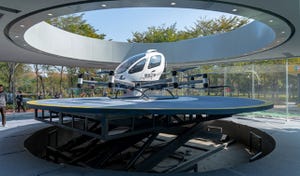
Researchers from South Korea’s Gwangju Institute of Science and Technology (GIST) have developed a new rehabilitation system that combines robotics and virtual reality (VR) technologies to help tremor sufferers perform daily activities better.
Tremors, or involuntary rhythmic movements, are often experienced by people with neurological disorders. They can severely impair how sufferers perform everyday tasks, reducing their quality of life and independence.
Tremor rehabilitation is a key priority in neurological rehabilitation but is particularly complex requiring ongoing therapy.
Researchers at GIST developed a system, called the Spherical Parallel INstrument for Daily Living Emulation (SPINDLE), that combines robotics and VR, which they say can improve tremor therapy outcomes.
The system could offer personalized resistance therapy training at home through a TV or VR headset and a tabletop device.
Using the combined system, daily activities, such as holding a cup, pouring or stirring liquid, are realistically simulated using VR, something that is often difficult for other rehabilitation robots to replicate, according to the researchers.
The researchers tested the efficacy of SPINDLE during a study involving nine healthy people. After being trained to use the system using VR technology, participants wore reflective markers and surface electromyography sensors and were subjected to simulated tremors and asked to perform various activities of daily life, both with the SPINDLE system and with normal objects.
The participants' performance in both experiments were compared and the researchers’ found the users experienced effective tremor suppression with the SPINDLE, which contributed to smoother and more controlled movements.
It also resulted in improved motor control, coordination and neuroplasticity, all key factors in effective neurological rehabilitation, as well as notable improvements in upper limb strength and dexterity, according to the researchers.
“A standout feature of the SPINDLE system is its game-based training paradigm, which allows for varying levels of resistance as needed,” said Jiyeon Kang, an associate professor at GIST since 2023. “This approach not only makes the therapy sessions engaging and enjoyable but also significantly aids in improving the strength and dexterity of individuals with tremors,”
The system’s real time visual feedback and interactive virtual reality elements should also encourage users to remain motivated to use it.
Additionally, the data collected from training sessions can provide valuable insights into neuroplasticity and motor learning to support more effective treatments for a wide range of neurological disorders, according to the researchers. The device could also be used for sports training and injury prevention.
A paper on the research was published in April in IEEE Transactions on Neural Systems and Rehabilitation Engineering.
About the Author
You May Also Like


.png?width=700&auto=webp&quality=80&disable=upscale)





